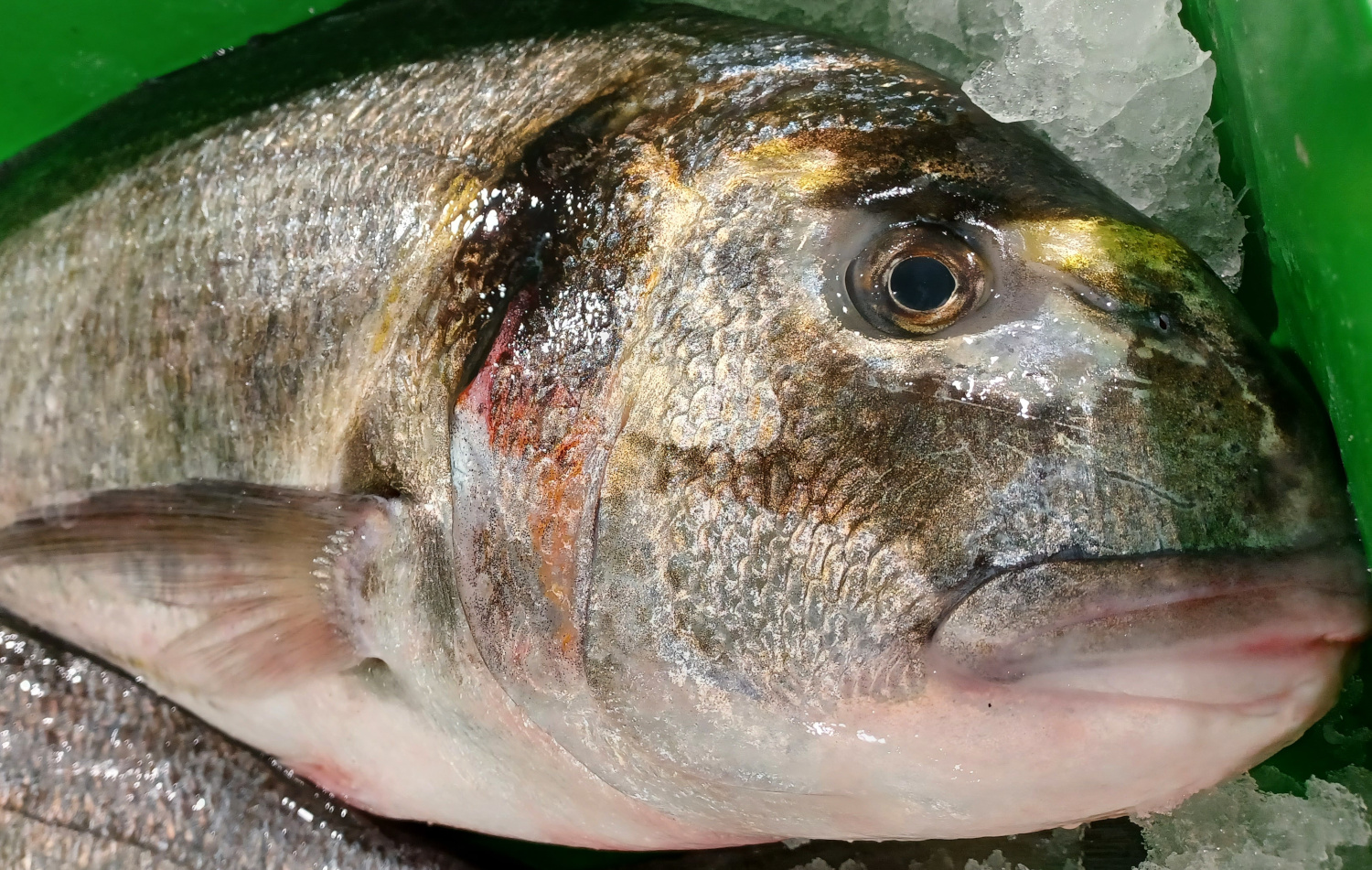
Golden elongated body with big head. It has a gold line that gives it a name between the eyes, more yellow as the fish ages, and a black spot that covers the surface of the opérculus. It's gray silver, darker on the back. The pectoral fins are large and their tail wide with black edges. Well, one more fish. But with their eccentricities once again.
A study carried out in the controlled water tanks used in aquaculture in the Balearic Islands concludes that if the young gilts are threatened for some time with a predator, they can produce physical transformations to combat it, such as increasing the height of the body so that the predator cannot swallow directly. These changes are also reversible for the golden boys and girls: once the risk time is over, they will return to their usual form.
Along the coast, although they can extend up to 150 meters deep, in the first years of life they are concentrated close to the coast, in juvenile assemblies, on sandy or rocky depths of 30 meters or less. However, young people have a serious problem: they are all males. As if it were not enough, in two or three years, everyone will become female. Therefore, all females will be more mature than males. This type of species is called pro-Andean hermaphrodites, as the maturity of males comes before that of females (this is what we do not). And so they will manage, at times when the breeding season comes together in larger groups: for every kilogram of adult female gold, two million eggs of a millimeter in diameter will be placed. Pay attention. On the other hand, to feed, both by the jaw and by the resistant denture, they can easily break the crustacean and mollusc shells found between the sand and the rock; even if a small fish passes in front, they do not let the opportunity pass.
In gastronomy there is no more fish, and so they are paid in the shops; the savages, of course, are more expensive. It is also one of the most appreciated species for those who practice underwater recreation in our country. Because of its importance, its high rate of growth, its ability to adapt to food and its great tolerance to low salinity waters, also satisfied in the river estuary, it is a suitable species for both the cultivation cages at sea and the crops on land. Although among them there are specific cases growing with natural foods – molluscs and crustaceans – the most widespread type of food in aquaculture is feed; and here another world is spreading about the quantity and provenance of the raw materials needed for its production. In each case, and given that the commercial size of the gilts ranges from 250 to 2 kilos, it is clear that a gilt will hardly be xaltomic – this is called the gilts of more than one kilo in the area of Hondarribia – if it is not free at sea.
In the fishmonger look at the origin of the fish, asking where it comes from, whether it is fish of the day, with which instrument it has been caught – artisanal fishermen usually take longlines with the bottom line – or whether it is aquaculture. Ask, learn and reflect on how we feed ourselves based on what we buy and what we are protecting – what to buy, protect it. If you want to go deeper into aquaculture, you can go to other people, such as Mutriku, because there are still people in the area who can prove that aquaculture can be done differently.
GOLDEN (Sparus aurata)
GROUP: Vertebrate/Fish.
SIZE: 30-40 cm. Larger specimens may be over 10 years old, over 15 kilos and about 70 cm.
WHERE DO YOU LIVE? The entire East Atlantic (from Cape Verde to the North Sea), Mediterranean and Black Sea.
What do you eat? Molluscs, crustaceans and smaller fish.
LEVEL OF PROTECTION Not protected.
Ugaztunei eskainitako azken artikuluaren amaierako hitzak hurrengo animalia aurkezteko aitzakia paregabea dira. Bertan esaten genuen muturluzeak erreka “garbi eta txukunak” behar dituela, kutsadurarik gabeak baina elementu natural anitzekin. Animalia txiki horren... [+]
Antxoa, bokarta edo albokartia, gure arrain komertzialen artean txikiena, euskal kostaldera hurbildu da.
Katalanen ustetan artzainak engainatzen omen ditu hegazti honek: “enganyapastors”. Espainiar eta latindarrek, aldiz, ahuntzari esnea kentzen diola diote, hortik datorkio hain zuzen ere izen zientifikoan (Caprimulgus europaeus) islatzen den caprimulgus (capra... [+]
Leihatila honetan behin baino gehiagotan azaldu ditugu Ama Naturaren engainuak bere izakiak babestearren. Batzuetan, erle edo liztor itxura zuten euliak ekarri ditugu, beste batzuetan inongo arriskurik ez duten arrisku-kolorazioko intsektuak ere bai (kolorazio aposematikoa... [+]
Nekazal eremu lehor baten erdian ageri da putzua. Txikia da tamainaz, eta ez oso sakona. Egunak dira euririk egiten ez duela, baina oasi txiki honek oraindik ere aurretik bildutako urari eusten dio. Gauak eremua irentsi du eta isiltasunaren erdian kantu bakarti bat entzun da... [+]